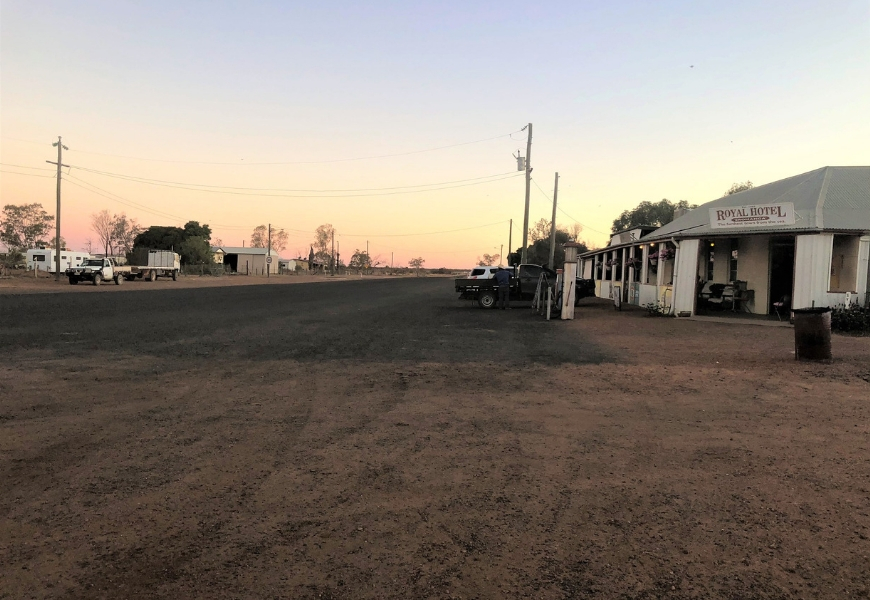
Australia’s furthest town from the sea: Eromanga
When you live on an island, being the furthest spot from the sea is usually not much of a claim to fame.
Take the world’s smallest inhabited island, for example.
Located between New York and Canada, and appropriately named ‘Just Room Enough Island’, there’s just room enough for one house and one tree. Oh, and a tiny stretch of sand where ‘stretch’ is, well, a bit of a stretch.
Living – or visiting – somewhere like this, there’s really no getting away from the water.
But what about when the ‘island’ in question is the world’s sixth largest country?
Spanning more than seven million square kilometres, here in Australia, being the furthest town from the sea is a much greater feat.
Just ask the locals at Eromanga in outback Queensland.

Eromanga, get connected
Eromanga – Australia’s furthest town from the sea – is now ready to connect to the nbn™ broadband access network.
Did you know: according to Connecting Australia research commissioned by NBN Co, up to 15,520 additional businesses are predicted for Queensland by 2021, with help from services over the nbn™ access network.
Welcome to Eromanga-saurus
To stick a pin in a map of Australia to mark the town of Eromanga, start at Brisbane, then trace your way out west towards the Queensland-South Australian border.
Want to drive that same distance? Then, buckle up and settle in.
A road trip away from the state’s capital (and the ocean) to the town that just 45 people call home, will clock up more than 1,000 kilometres and about 12 hours behind the wheel.

To put it in perspective, that’s about the same distance from east coast to west of the world’s largest island: Greenland.
Yet, you’ll soon find, it’s well-worth the effort. Especially if you’re a fan of dinosaurs.
No bones about it, what Eromanga may lack in population density, it sure makes up in the natural history stakes.
It’s home to the largest dinosaurs found to date in Australia – including Cooper and George – who lived in the region approximately 95 to 98 million years ago.
Hailing from the mid-Cretaceous Period, the pair are Titanosaur Sauropods boasting an estimated body length of between 24 and 26 metres.

Three things to do in Eromanga


Unwind at Knot-A-Saurus Park

The region according to nbn™ local’s Damon
With only a small number of people living in town, nbn™ local Manager for Southern Queensland Damon Cavalchini explains, most of the population lives on surrounding properties and relies on services like the nbn™ Sky Muster™ satellite service, or mobile data, for connectivity.
“Sky Muster™ is revolutionising outback communication,” says Damon.
“With access to speeds and data not previously available – especially with our new Sky Muster™ Plus service – nbn is not just about internet but also about providing key services, like Wi-Fi calling, which means being able to stay in touch with neighbours, friends and family.
“We recently visited Eromanga as part of a coordinated Drought Community Outreach program and heard first-hand stories of how local stations were being helped by access and connectivity, thanks to our Sky Muster™ satellite services.
“Whenever I visit these communities, I’m reminded of the stark beauty of the land, the amazing resilience of its people, and the natural wonders of history never far from mind.


Eromanga by the numbers
100 – The lengths of twisted aluminium in metres used to create the Sauropod sculptures in Knot-A-Saurus Park.
1250 – The number of barrels per day of crude oil continuously refined by the town’s mini refinery.
1885 – The year the Old Royal Hotel was established, one of Eromanga’s original buildings.
2004 – The year Eromanga Titanosaur fossils were discovered in the region.
4480 – Eromanga's postcode.

